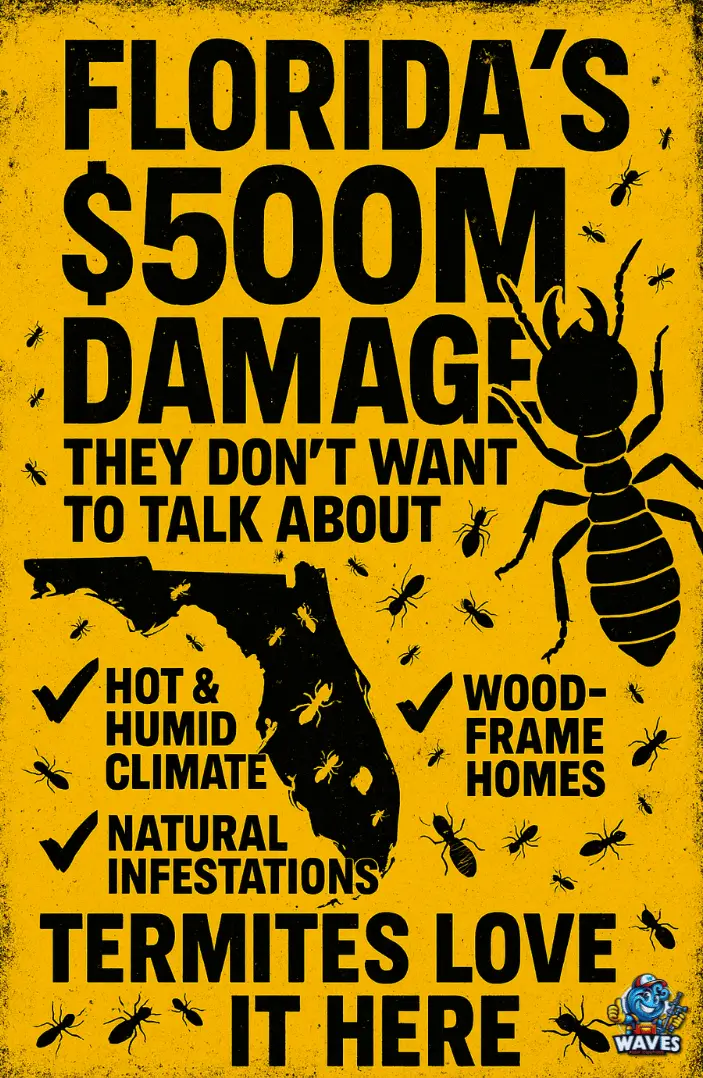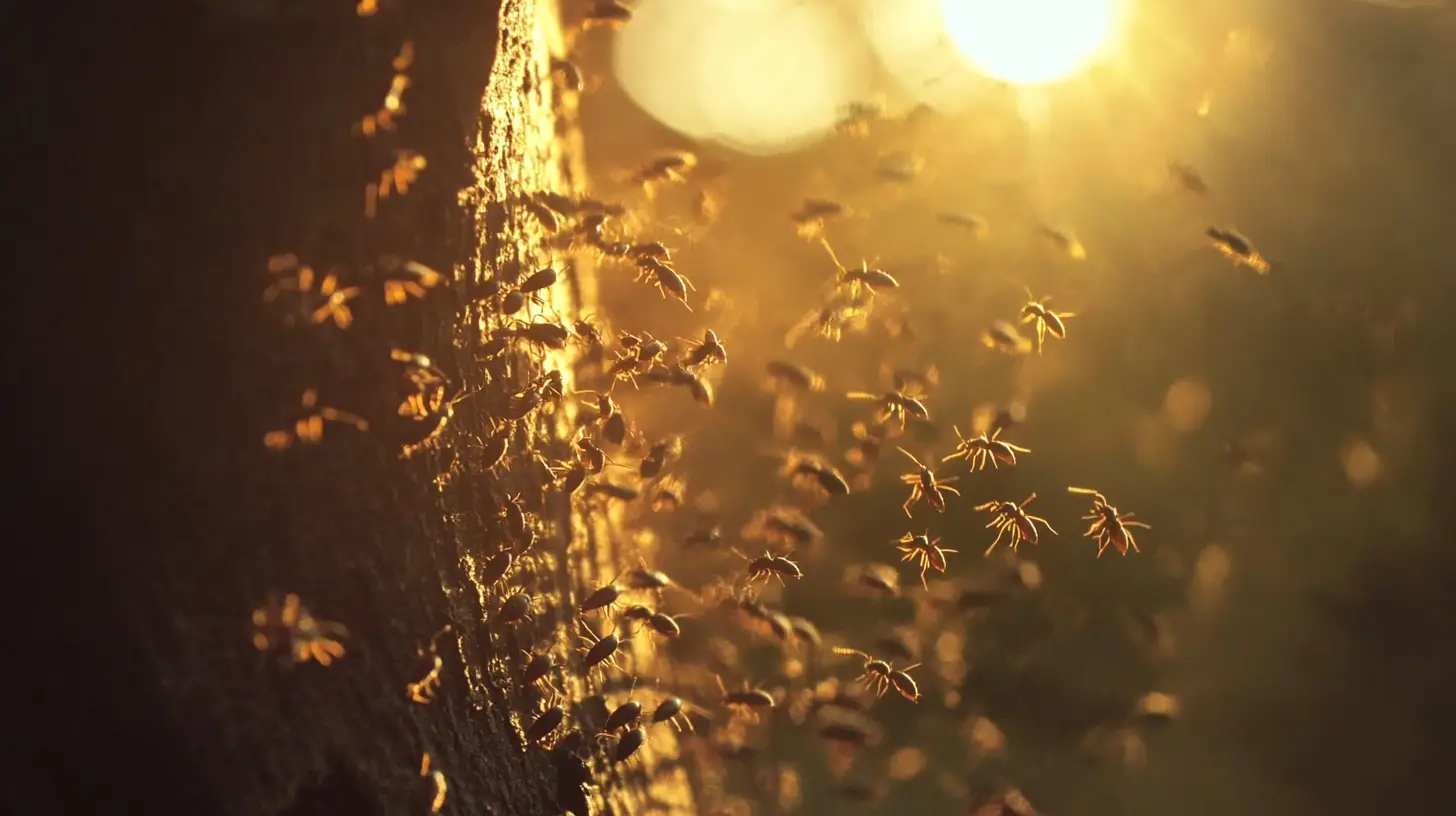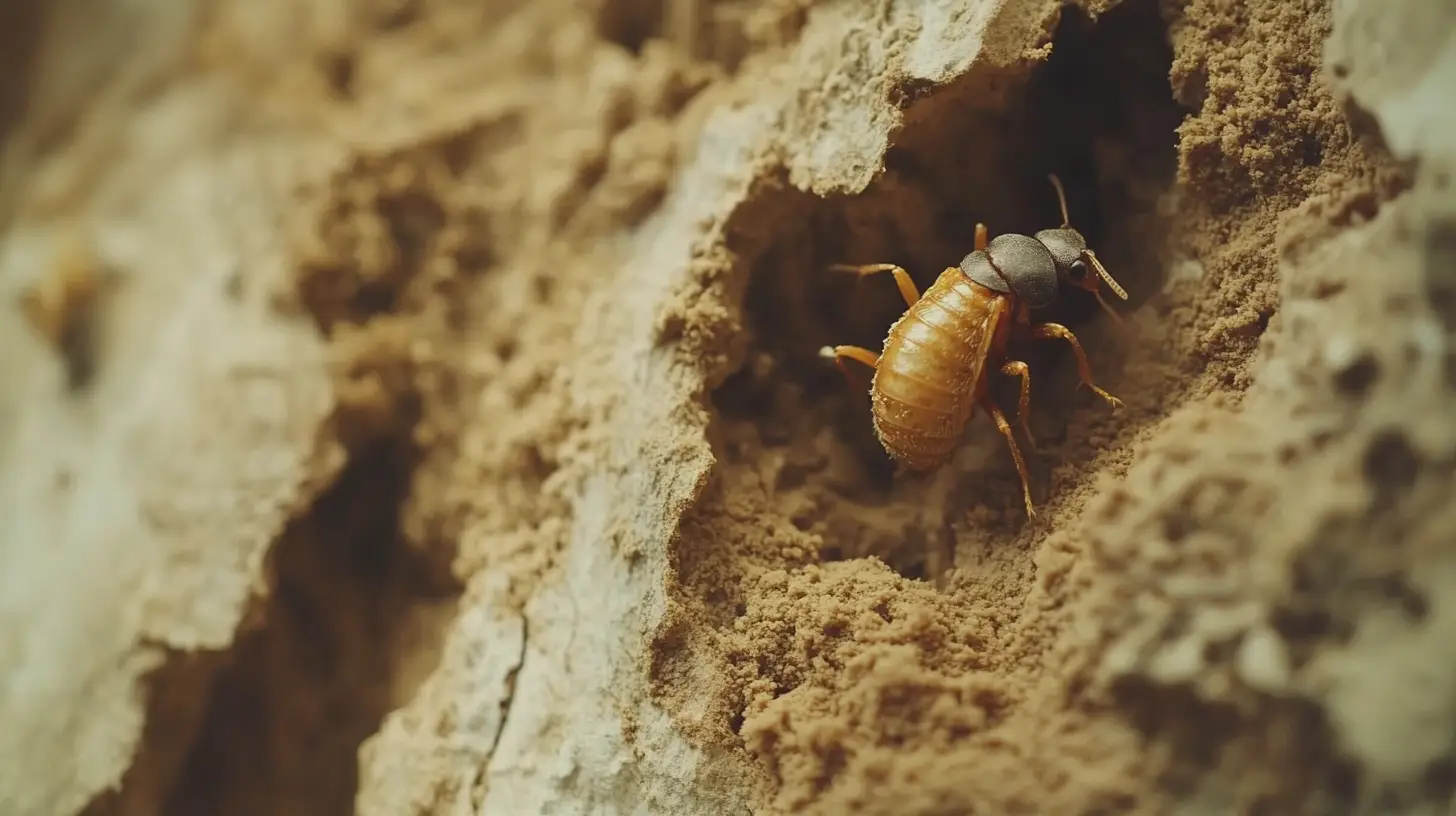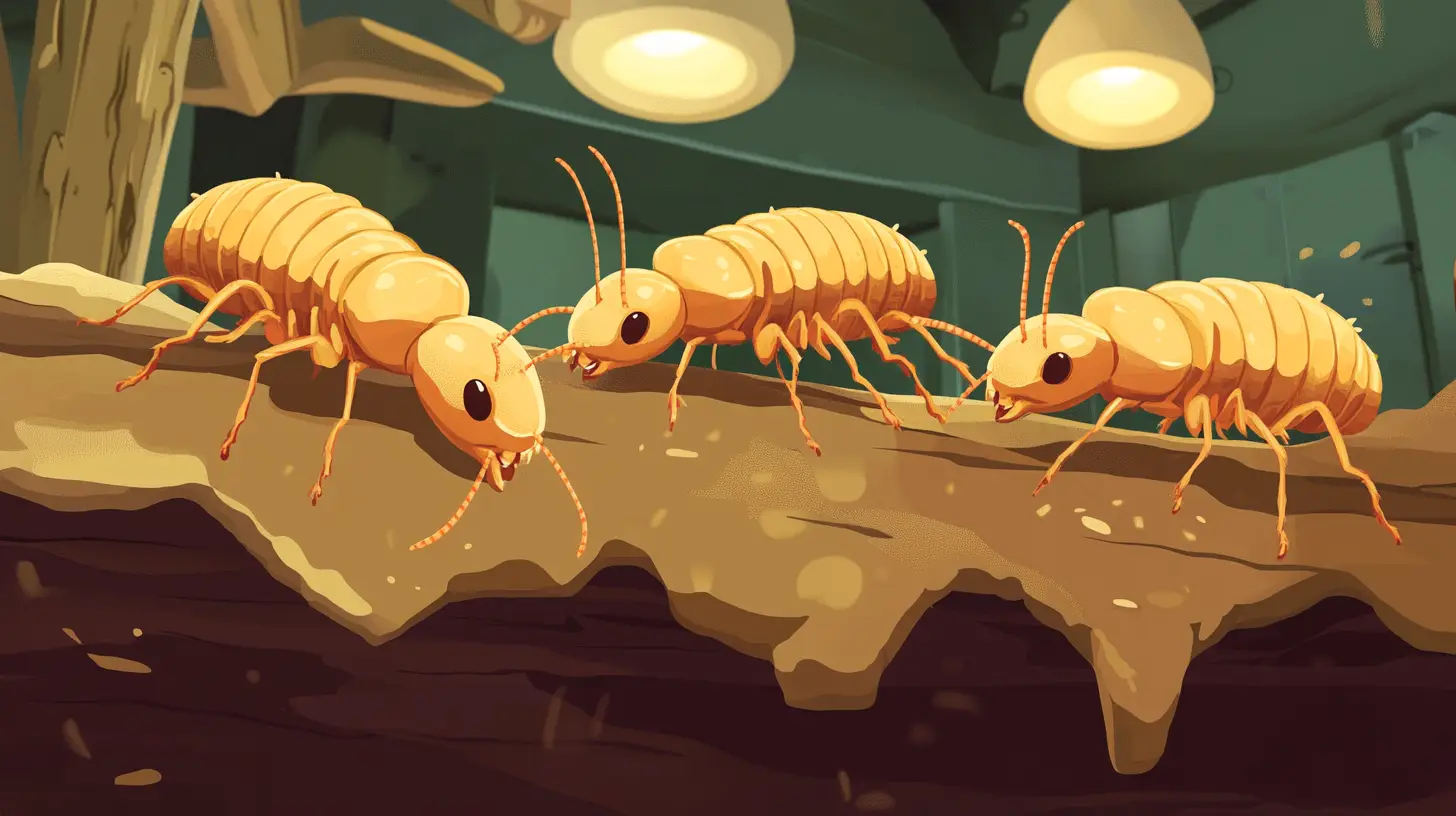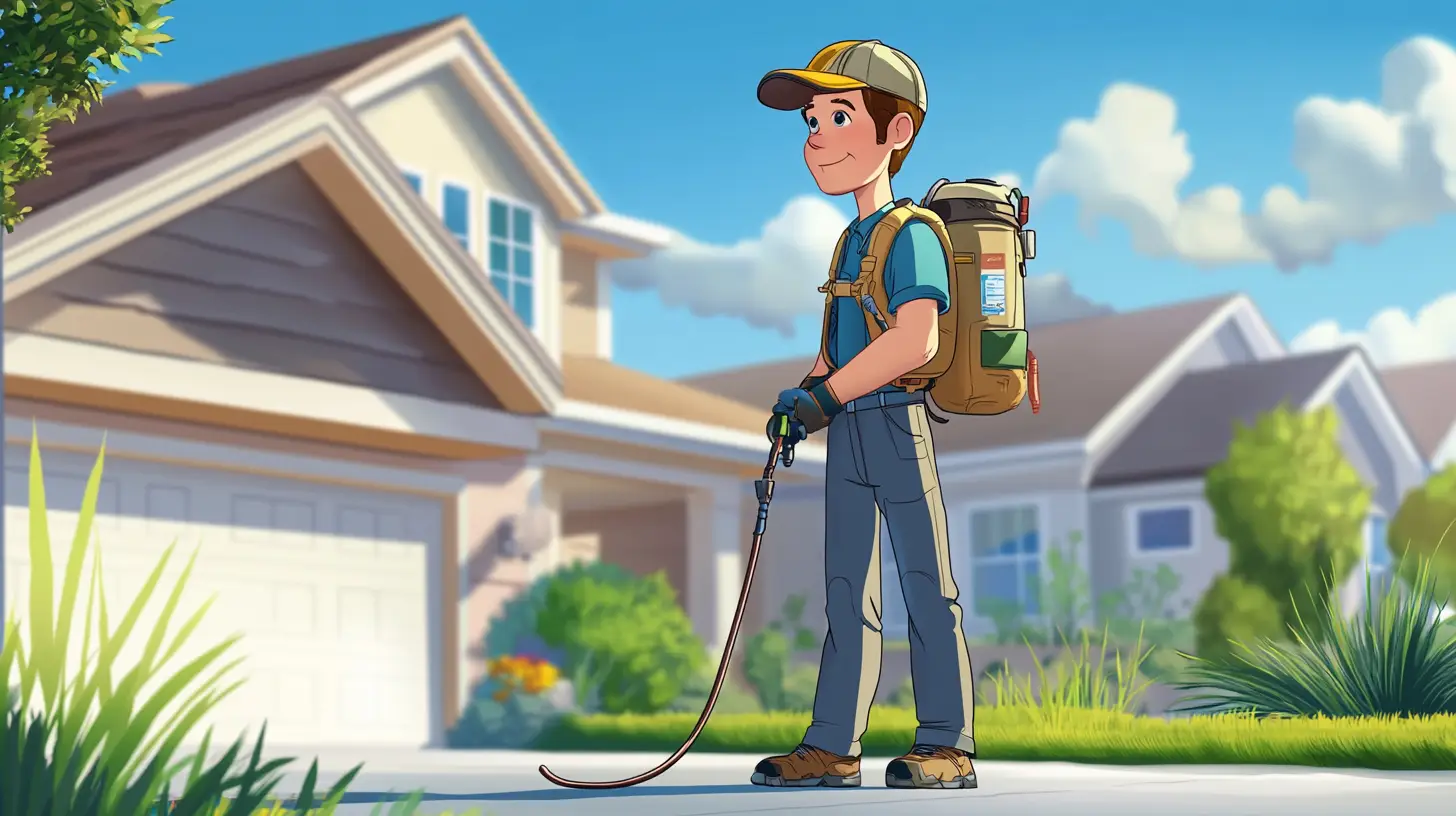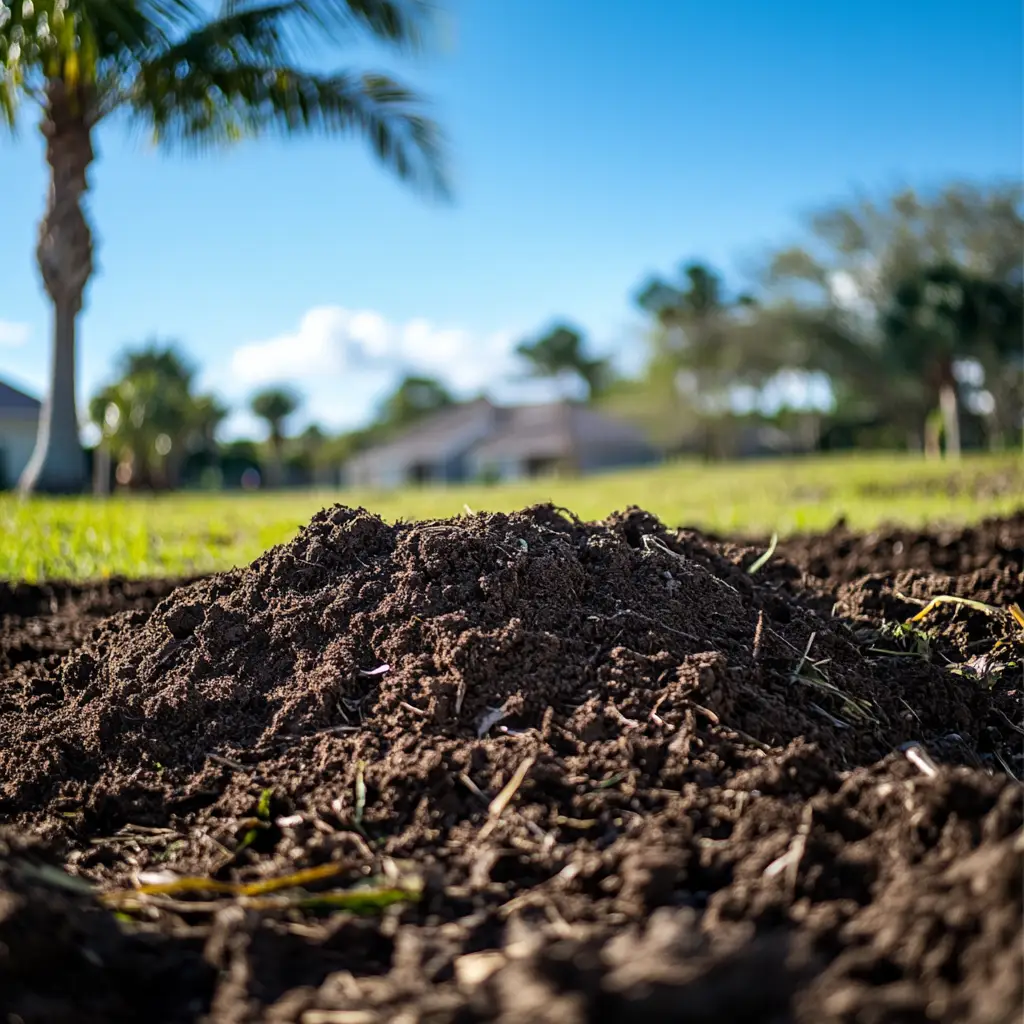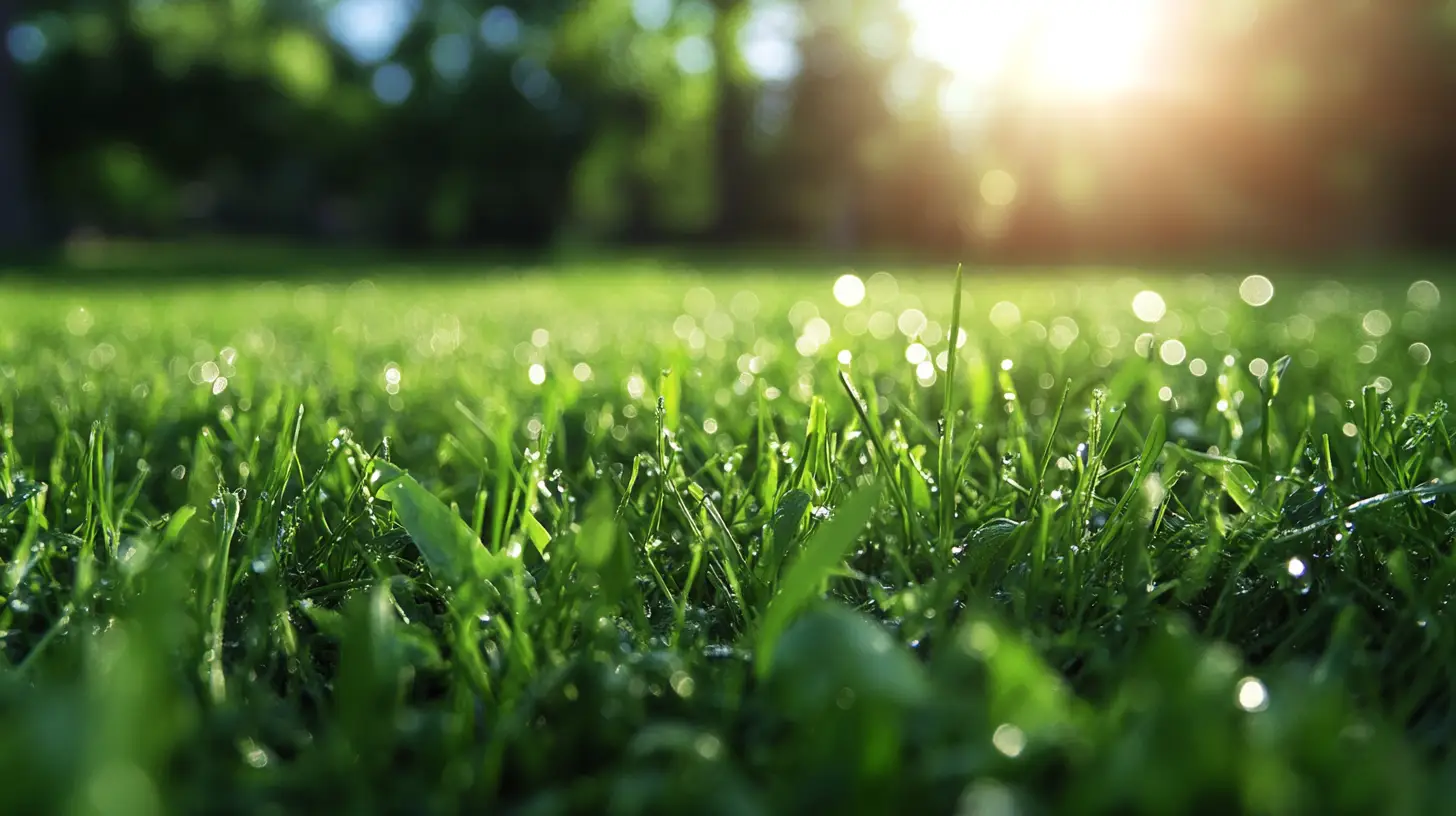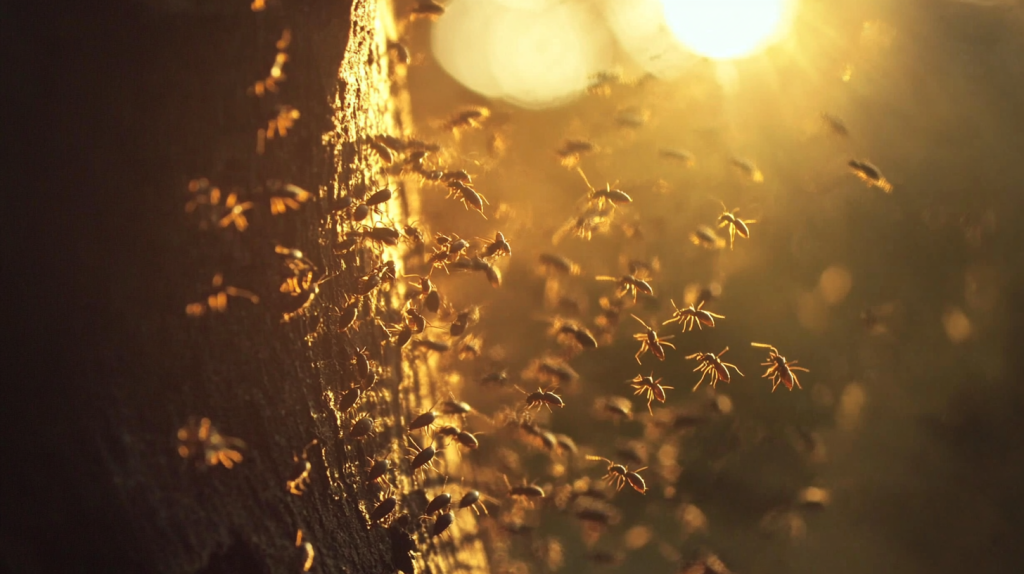
Table of Contents
Termite swarmers signal the beginning of a potential infestation that can threaten even concrete homes in Lakewood Ranch. These winged reproductive termites emerge from established colonies during specific environmental conditions, seeking new locations to establish fresh colonies that could ultimately damage your property.
Key Takeaways:
- Species-Specific Approach: Different termite species in Florida (Southeastern Drywood, Formosan, Eastern Subterranean, and West Indian Drywood) swarm at different times and require targeted treatment strategies.
- Early Detection Matters: Identifying swarmers or their discarded wings promptly can prevent established colonies from causing extensive damage to your home.
- Year-Round Vigilance: Florida’s climate supports termite activity throughout all seasons, making ongoing monitoring critical for Lakewood Ranch homeowners.
- Professional Identification: Accurate termite species identification is essential for effective treatment, as control methods vary significantly between species.
- Preventative Protection: The most cost-effective approach to termite management is implementing preventative treatments before infestation occur
The alarming science behind termite swarmers
Termite swarmers (alates) represent nature’s remarkable reproductive strategy. A single mature termite colony can release between 20,000-40,000 swarmers in a single event, with each female capable of establishing a new colony producing up to 30,000 offspring annually. These flying termites emerge from their colonies when specific temperature and humidity thresholds are met—typically between 70-95°F with humidity above 80%. In Lakewood Ranch, this creates perfect swarming conditions throughout much of the year, particularly from March through June when an estimated 85% of annual swarms occur.
Florida’s destructive termite species
Lakewood Ranch faces unique challenges with three particularly destructive termite species:
- Formosan subterranean termites: These “super termites” can create colonies containing millions of individuals, consuming up to 13 ounces of wood daily—enough to severely damage a home within six months if left untreated. Their swarms typically occur at night from April through July.
- Eastern subterranean termites: The most common native termites swarm during daylight hours from February through May. A single colony can contain up to 300,000 individuals and consume over 5 pounds of wood per year.
- Drywood termites: Unlike subterranean species, these termites live entirely within wooden structures without soil contact. They swarm during summer evenings, with colonies ranging from a few hundred to several thousand individuals.
How termite swarmers infiltrate concrete homes
While concrete itself resists termite feeding, swarmers exploit various vulnerabilities:
- Microscopic entry points: Swarmers seek out hairline cracks as small as 1/32 inch in concrete foundations—about half the width of a credit card—to establish new colonies with direct access to wooden components.
- Construction gaps: Research shows that 60% of concrete home infestations begin at construction joints, plumbing penetrations, and expansion gaps that provide swarmers protected entry routes.
- Above-ground access: Unlike worker termites, swarmers don’t require soil contact and can enter directly through attic vents, weep holes in brick veneer, or gaps around windows—bypassing concrete barriers completely.
- Hidden pathways: Once established, new colonies created by successful swarmers build protective mud tubes through concrete block voids, with studies showing they can extend these tubes at rates of 12-16 feet annually inside walls.
Recognizing swarmer activity in your home
Early detection of termite swarmers provides critical protection for your investment:
- Active swarms often appear near light sources, particularly after rainfall when humidity peaks
- Discarded wings near windowsills and doorframes indicate successful mating and colony establishment
- Subtle knock-on effects include stuck windows and doors as moisture from termite activity warps wooden frames
- Evening inspection with flashlights during peak swarming season often reveals activity missed during daylight hours
- Mud tubes appearing on concrete surfaces indicate established colonies, not just swarmer activity
Effective prevention strategies against termite swarmers
Protect your Lakewood Ranch property with these specialized approaches:
- Strategic landscaping: Maintain at least 18 inches between soil and wooden elements, and consider termite-resistant alternatives like composite decking for areas within 2 feet of foundations.
- Foundation protection: Apply professional-grade termiticides that create repellent barriers specifically targeting flying termites during swarming season.
- Moisture management: Install proper drainage systems, as research shows reducing soil moisture by just 10% can decrease termite swarmer attraction by up to 40%.
- Entry point elimination: Seal all cracks wider than 1/64 inch in concrete foundations—swarmers can squeeze through surprisingly tiny openings to establish colonies.
- Attraction reduction: Use yellow “bug lights” near entrances during swarming season, as they attract 60% fewer termite swarmers than standard white lighting.
Professional protection against termite swarmers
Our specialized swarmer prevention services in Lakewood Ranch include comprehensive inspections during peak swarming seasons, preventative treatments that specifically target reproductive termites, and customized protection plans based on your home’s construction and risk factors.
Our expert technicians understand the complex biology of termite swarmers and their unique threats to concrete structures in Florida’s challenging climate. We provide solutions targeting both active swarmers and potential entry points to prevent new colony formation.
Frequently Askked Questions (FAQs)
What are swarming termites?
Swarming termites are the reproductive members of termite colonies that develop wings and leave established nests to form new colonies. These swarmers (also called alates) are the termites most commonly seen by homeowners, as they emerge from colonies in large numbers during specific environmental conditions. Different termite species swarm at different times of year in Florida, with some preferring night hours and others emerging during daylight, particularly after rainfall.
What signs indicate termite swarming?
Key indicators of termite swarming include: large numbers of winged insects emerging from walls, foundation areas, or soil; discarded wings on windowsills, door frames, or light fixtures; mud tubes along foundation walls; hollow-sounding wood; tight-fitting doors or windows (caused by moisture from termite activity); and visible damage to exposed wood. During swarming season, termites are particularly attracted to light sources, so check areas around exterior lighting fixtures carefully.
How can I prevent my home from becoming infested with swarming termites?
Effective prevention strategies include: eliminating wood-to-soil contact around your property; maintaining at least 18 inches between soil and wooden structural elements; repairing leaky pipes, air conditioning units, and areas with poor drainage; removing dead trees, stumps, and woodpiles from your yard; scheduling annual professional inspections; installing proper ventilation in crawl spaces and attics; and implementing professional preventative treatments from Waves Pest Control including liquid barrier systems and targeted bait stations.
When should I contact a Waves Pest Control professional for assistance with swarming termites?
Contact our Lakewood Ranch specialists immediately if you observe: swarmers inside your home; discarded wings around windows, doors or light fixtures; mud tubes on foundation walls; wood that sounds hollow when tapped; doors or windows that suddenly become difficult to open; or any visible wood damage with maze-like patterns. Even if you’re unsure whether you’re seeing termites or flying ants, it’s best to have our experts perform a professional inspection, as early intervention prevents costly damage.
How do I know if I have a swarming termite infestation?
Confirming a termite infestation requires professional expertise, as swarmers can sometimes be confused with flying ants. Key differences include: termites have straight antennae while ants have bent antennae; termite wings are equal in length while ant wings are unequal; and termites have thick waists while ants have pinched waists. Our Waves Pest Control technicians use specialized equipment to detect termite activity within walls and hidden areas, providing definitive identification of species and infestation extent.
Are there DIY treatments available for dealing with swarming termite issues?
While some retail products claim to address termite problems, DIY treatments are rarely effective against established colonies due to termites’ cryptic nature and colony sizes that can number in the millions. Most consumer products only affect termites on contact without reaching the colony’s core. Professional treatments from Waves Pest Control utilize commercial-grade products with transfer effects that spread throughout colonies, along with specialized application equipment that ensures complete coverage of potential entry points.
How long do treatment solutions last against swarming termites?
Our standard liquid barrier treatments typically provide 5-7 years of protection, depending on soil conditions and environmental factors. Our baiting systems require quarterly monitoring but provide continuous protection as long as they’re maintained. For drywood termite treatments, localized treatments can last 3-5 years, while whole-structure fumigation provides immediate elimination with preventative benefits lasting 1-2 years. All Waves Pest Control treatments include detailed documentation of the protection timeline and recommendations for optimal retreatment scheduling.
Is it possible to completely get rid of swarming termites in and around a property?
While complete elimination of all termites from the environment isn’t possible (as they’re naturally occurring outdoor insects), our comprehensive treatment protocols can effectively eliminate active colonies from your home and establish protective barriers against reinfestation. Our Waves Pest Control warranty programs provide ongoing monitoring and retreatment if necessary, ensuring continuous protection for your Lakewood Ranch property against these persistent pests.

